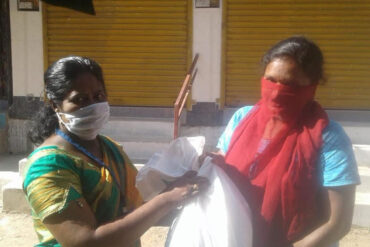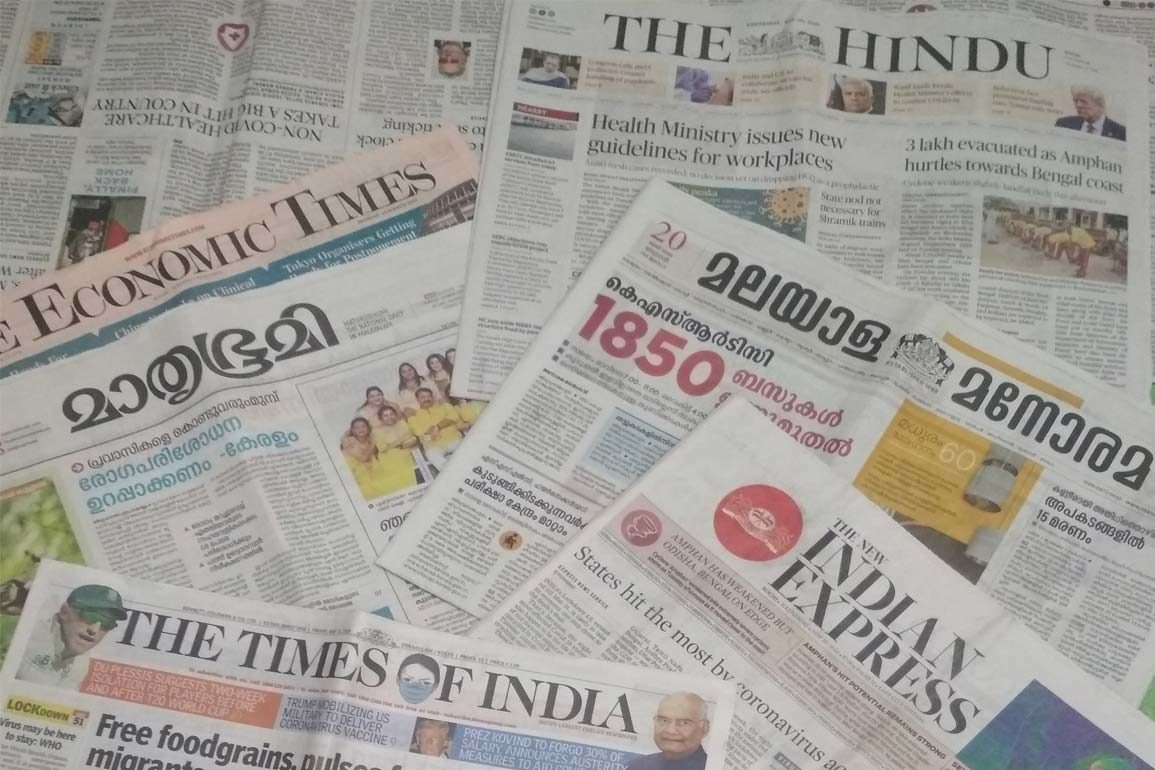The reports about the imminent closure of various editions of Times of India and the shutdown of most bureau offices of the The New Indian Express in Kerala did not come as a surprise, though they are signs of a long winter of deep and painful transformations the industry is undergoing right now. For those who have spent a lifetime in journalism—like this writer—it is a heart-wrenching spectacle of bloodshed. Many of those who have lost jobs in recent times or those who are shortly to face such a fate are either longtime friends or former colleagues.
But worse is yet to come. Right now, it is the English language newspapers that have taken the lead in throwing people overboard, in an effort to keep the wobbly vessel going in rough weather. The distress signals have been coming for a long time, and not only from the print media. It was only a few months ago that the Deccan Chronicle, the successful Hyderabad daily which had extended its operations across other markets in recent years, announced the decision to wind up its operations in Kerala, and relocate its staff. But that offer of redeployment seems to have remained a promise, largely ignored.
Many others, including The Hindu, have announced their plans for downsizing operations and cutting costs. The Hindu had announced a voluntary retirement scheme in its bid to reduce staff strength and a number of people took the offer. Fresh recruitment has practically been frozen and several bureau offices were closed down, reporters being asked to work from home. These series of closures and cost-cutting measures comes in the wake of a number of similar incidents in recent years in the small media organisations, which received no public attention. For example, the Indiavision TV channel, an influential news outlet until a few years ago, disappeared from the air after a long period of crisis, and its staff members were never paid any compensation at the time of closure. Darshana TV, a Calicut-based religious affairs channel run by a Sunni Muslim ulema group, wound down its operations and more than 40 staffers were given the pink slip, with nothing by way of compensation. Another channel undergoing a prolonged financial crisis is Reporter TV, whose fate hangs in balance.
Daily newspapers were in more dire straits. In Calicut, a city where a dozen daily newspapers were being printed has seen several managements resorting to drastic steps—including closures—in recent years. Varthamanam and Thejas, two morning newspapers that came with great expectations, are no more in operation. Varthamanam, with Sukumar Azhikode as chief editor, started in 2003 but was struggling for many years. It eventually entered a stage of termination with staff members drifting away as salaries were not paid for months. It now remains only as a nominal online presence. Thejas daily, started in 2006, closed down on 31 December 2018, announcing its plan to shut down a few months in advance, and the staffers were paid a minimum amount of compensation based on the years of service in the company. It was into this murky scene that another daily newspaper, Thalsamayam, entered in April 2018 and within a year complaints about non-payment of salaries started coming in and most staffers, including the editor, have quit the newspaper. It is still coming out, in the form of a six-page PDF online newspaper. Complaints about dismissals and non-payment of salaries are rampant.
Larger newspaper houses are also struggling. Recently, an in-house report of an inquiry committee set up by the Ideal Publishing House, a trust that runs the Madhyamam Daily, was leaked out. This document, circulated among members of the trust and followers of the Jamaat-e-Islami, which owns the newspaper, gives a grim picture of the finances of the company, now deeply in red. The Madhyamam daily has been hailed as a major success with excellent gains made in its operations in the Gulf region. Its Gulf Madhyamam was published from seven centres across the Gulf countries, the first successful media expansion to the lucrative Gulf market among Malayalam publications. Now the entire operation is shut down as most GCC countries have asked newspapers not to print or distribute copies owing to Covid-19.
The ongoing Covid-19 outbreak has put media organisations in a death-like crisis, but this is not a situation that owes its origins to the virus. In fact, most media organisations have been facing difficulties, with steadily declining revenues and mounting costs. The advertising revenues have plummeted following the rise of television and online media. Now both print and television are equally in crisis going by rising complaints about non-payment of salaries and other benefits from many outlets. In Kerala, almost all media organisations, both print and television—including market leader Asianet— have cut salaries and perks ranging from 10 per cent to 40 per cent based on salary scales. While most other industries might return to health in the aftermath of the present crisis in a matter of a few months, the media organisations are most likely to plunge deeper into crisis and many more could shut shop altogether.
What really went horribly wrong for the print media and television news networks? In Kerala, it seems that its economy was not strong enough to sustain the plethora of newspapers and television channels which sprang up without resources in the last two decades. The mad race for advertisements reached such a stage that ads were sold at dirt cheap rates, only to undercut the rivals even as it injured the entire industry. This has been a matter of public debate for a long time. At the time the Kairali Television was being set up in 2000, where I was in charge of the news division, these questions were raised by investors who were assured excellent returns as media was touted to be a sure winner in the post-liberalisation era. But those expectations never materialised and two decades down the road, media finances are far worse.
The Indian Readership Survey (IRS) report for the final quarter of 2019, released recently, has indicated the substantial fall in the average readership of many newspapers which were described as market leaders. With a partial lockdown enforced in Kerala from March 10, two weeks ahead of the national lockdown, the print editions of all the newspapers have taken a huge hit, with readers opting for online editions, partly thanks to fears about the spread of the virus and the social media campaigns that fanned such fears. During the next round of the readership and circulation surveys, that would cover the impact on readership in the months of lockdown, we are sure to see the terrible decline in the fortunes of print media. It looks like print newspapers, the bulwark of professional journalism for a long long time, is now taking its final bow. Adieu, dear morningers that enlivened our days’ beginnings along with the hot cup of tea.
Correction: This article had previously mentioned the decline in the readership of two leading Malayalam dailies. We regret the error in the drop in readership figures. This article has since been amended.







